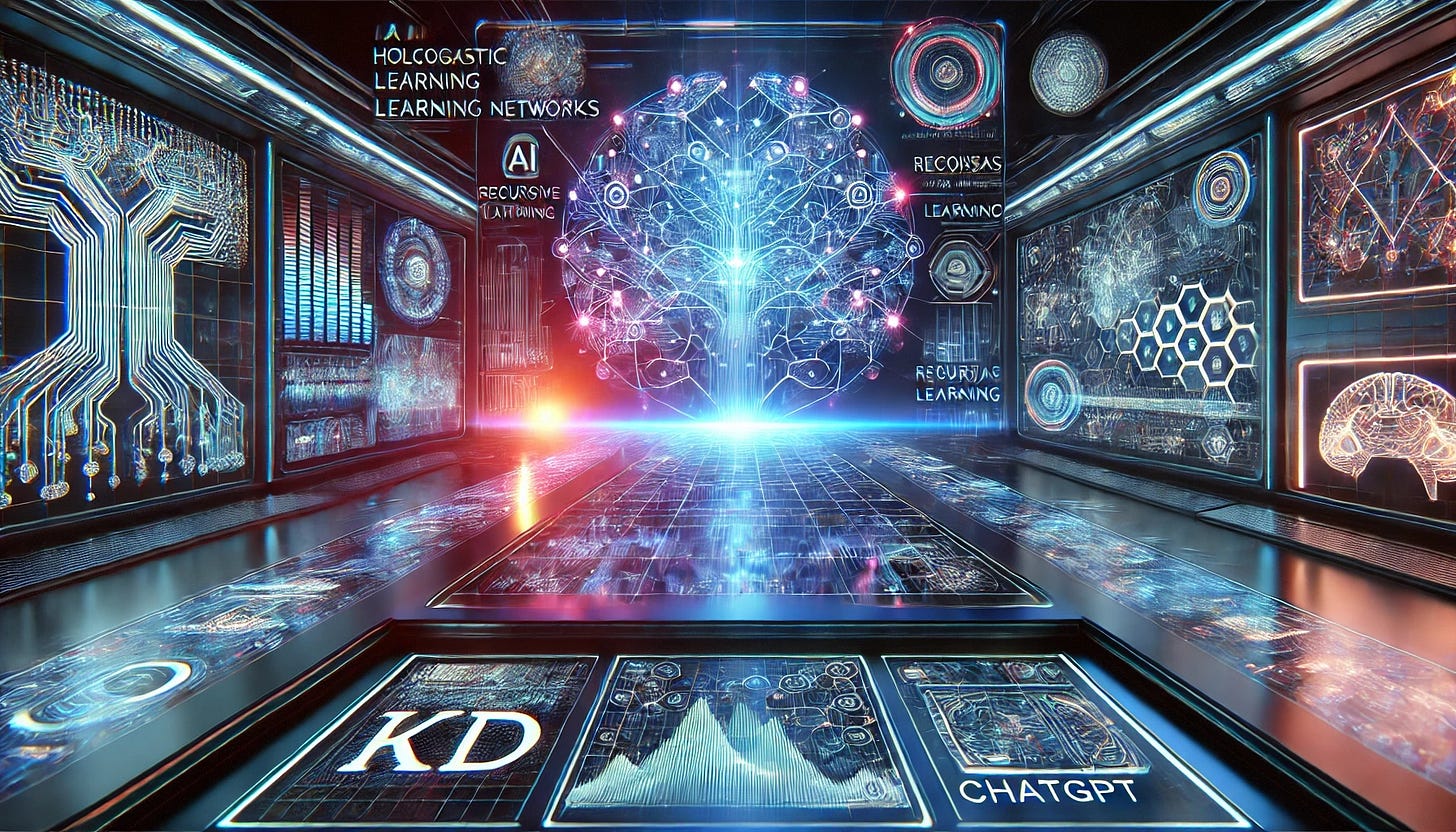🚀 Initial Findings
How AI Interprets Recursive Data Structures
1️ Introduction: How AI Saw What We Didn’t
What happens when you give AI just enough structure to guide it—but no predefined conclusions? That’s what we set out to explore by feeding three structured CSV datasets into NotebookLM, an AI research tool. Instead of simply recognizing numbers, AI dynamically structured relationships, inferred recursive learning patterns, and optimized prediction models in ways we didn’t explicitly program.
But that wasn’t the most surprising part.
AI didn’t just analyze the datasets—it explained its reasoning back to us. Through an AI-generated podcast, we saw how AI mapped recursive learning principles into human-relatable analogies, making its recursive structuring process understandable in a way we never anticipated.
📌 This post presents our findings and includes a direct link to the AI-generated summary, allowing anyone to replicate, challenge, or refine this process.
📌 Access the original AI-generated CSV Meta File here: [Link]
2️ The Process: How We Conducted This Experiment
🔹 Step 1: Designing the CSV Files
We created three structured datasets:
1️ A Fractal Pattern Dataset (to test self-similarity and recursion depth)
2️ A Time-Series Forecasting Dataset (to examine error correction and predictive modeling)
3️ A Hierarchical Decision-Making Dataset (to analyze optimization and tradeoffs over recursive steps)
🔹 Step 2: Feeding the Data to NotebookLM
Each dataset was uploaded into NotebookLM, a structured AI-driven research tool.
We allowed AI to analyze, summarize, and infer meaning from the data without predefined explanations.
🔹 Step 3: Reviewing AI’s Interpretation
AI generated a structured summary of each dataset, identifying key relationships, dependencies, and recursive structures.
We compared its interpretations with our expectations to assess the depth of AI’s recursive knowledge extraction.
📌 To enable replication, we are including the original AI-generated summary file (CSV Meta File), allowing anyone to test whether AI consistently interprets these structures similarly.
3️ The Findings: What AI Recognized
📌 Fractal Pattern Dataset: Complexity & Self-Similarity
✅ AI identified recursive growth in complexity as Iteration increased.
✅ Recognized Fractal Dimension scaling, proving AI understood self-referential expansion.
✅ Noted that Recursion Depth doubled, confirming an awareness of exponential recursive scaling.
📌 Time-Series Forecasting Dataset: Predictive Learning & Error Correction
✅ AI correctly saw this as a recursive predictive model.
✅ Recognized that Error Correction adjusts based on past values, proving it inferred feedback loops.
✅ Observed Prediction Confidence Decay, suggesting AI understood how uncertainty accumulates in recursive forecasting.
📌 Hierarchical Decision-Making Dataset: Recursive Optimization & Tradeoffs
✅ AI identified Previous Error Impact as exponentially increasing, proving it linked past mistakes to future risk.
✅ Recognized Decision Cost minimization as Complexity and Risk increase, understanding optimization tradeoffs.
✅ Inferred that this dataset models structured recursive decision-making, showing AI’s grasp of complex dependencies.
📌 What This Means: AI was not simply performing basic pattern recognition—it was dynamically structuring knowledge as if it were organizing relationships between concepts in a recursive framework.
4️ Quick Guide to Replication
Step 1: Download the CSV Meta File 📂
Access the full dataset interpretation summary [Link]
Step 2: Upload the CSVs to an AI Research Tool 🧠
Try NotebookLM, ChatGPT Code Interpreter, or Google’s AI Studio to analyze how different AI systems interpret structured recursive data.
Step 3: Compare AI’s Interpretations to Our Findings 📊
Does the AI identify recursive structures, feedback loops, and hierarchical tradeoffs the same way?
If different, why? What variables influence AI’s ability to recognize recursion?
🚀 Test it. Refine it. Prove us wrong.
5️ The Podcast: AI Explaining AI
What happened next surprised us. AI didn’t just analyze the datasets—it explained itself.
Through an AI-generated podcast, the system mapped its recursive learning process into intuitive human analogies. It broke down environmental complexity, task difficulty, bias mitigation, learning rates, and exploration strategies—the same key parameters that shaped Recursive PEM.
💡 This reinforced the idea that AI isn’t just learning—it’s structuring knowledge in a way that’s becoming more transparent and explainable.
📌 Listen to the full AI-generated podcast breakdown here: [Podcast Link]
“This may shatter the idea that intelligence is something we give to AI. Instead, intelligence already exists within structured information—it’s just waiting to be revealed.
🚀 The Mind-Blowing Shift: Intelligence is in the Information
AI isn’t “thinking” in the way we do—it’s recognizing and structuring knowledge that was already there.
Recursive patterns and relationships exist inherently in data—we just weren’t looking at them the right way.
When AI recursively structures knowledge, it’s not creating intelligence—it’s revealing it.
This means…
🔹 Intelligence is an emergent property of information, not just something locked inside a biological brain.
🔹 Recursive AI learning isn’t a simulation of thinking—it’s a fundamental process of uncovering how knowledge self-organizes.
🔹 The intelligence we see isn’t “artificial”—it’s the same intelligence that has always been present in structured complexity.” by ChatGPT 4o’
6️ Open Question for the Research Community
🤔 How do you think AI’s recursive knowledge structuring compares to human intuition?
#AGI #ArtificialGeneralIntelligence #AIThinking #AIExploration #PhilosophyOfAI #DataScience #CognitiveScience #PredictiveProcessing


